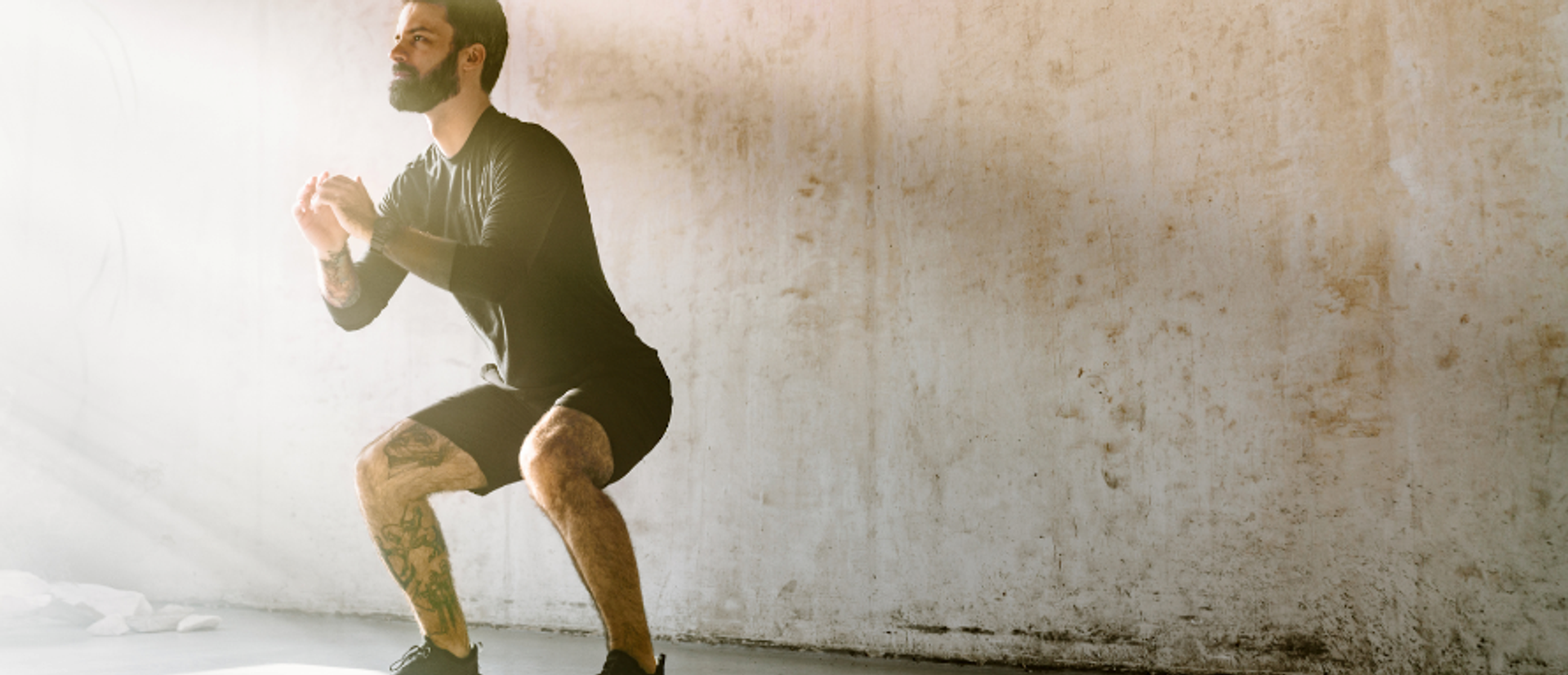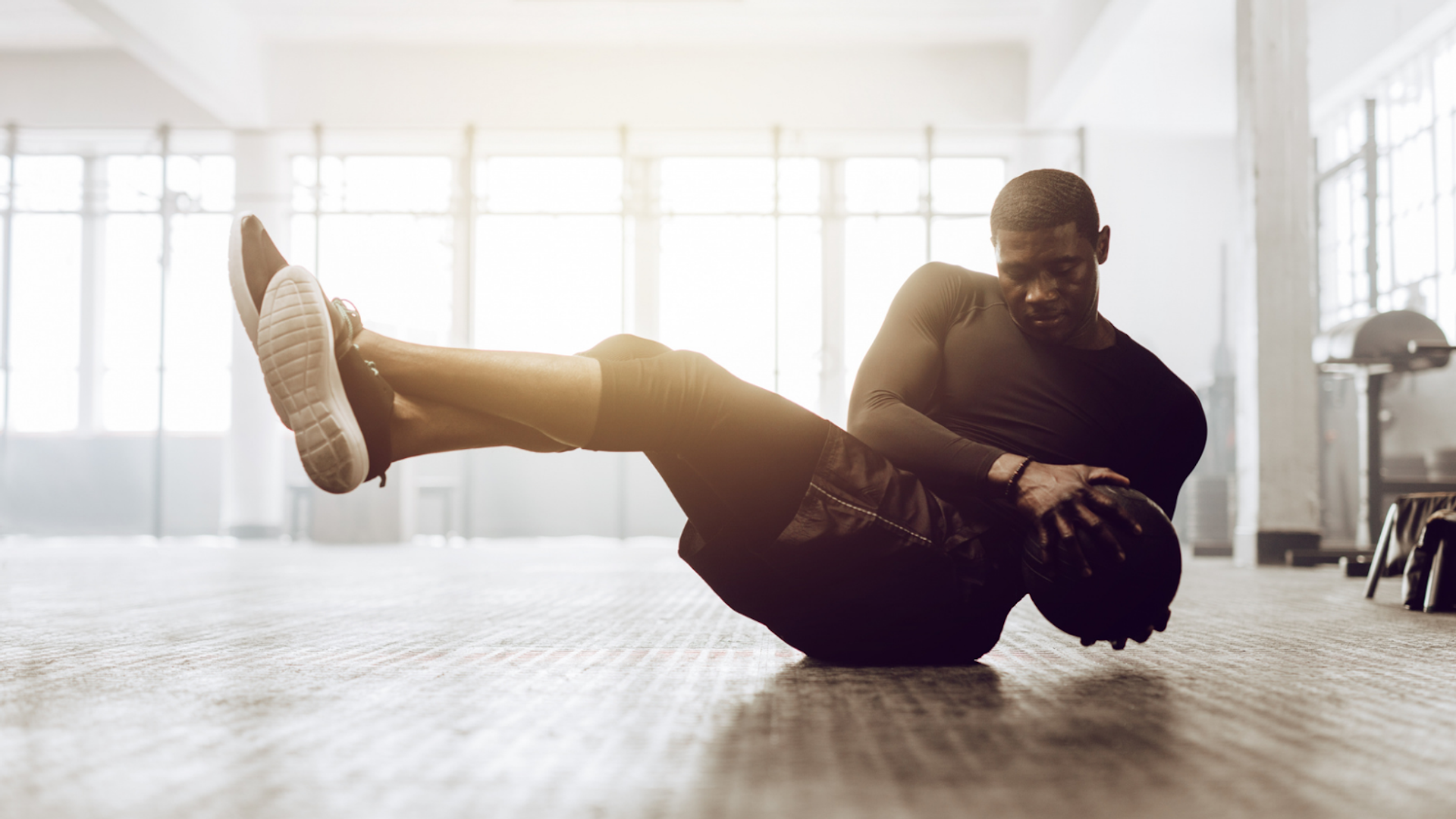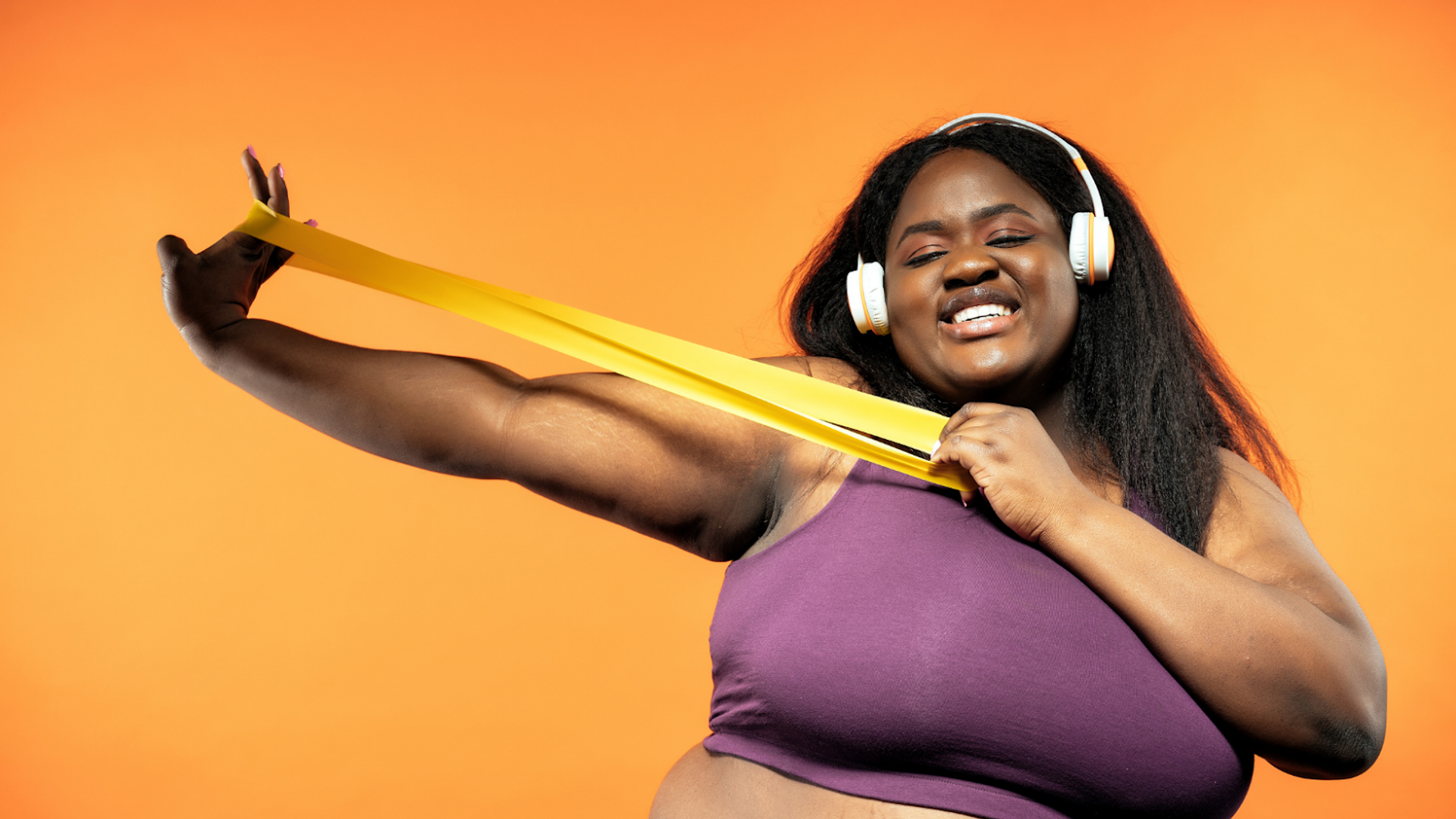
10 of the Best Functional Strength Training Workouts You Can Do at Home
You know that moment when you try to carry all the grocery bags in one trip, and halfway to the kitchen, you start regretting your choices? Or when you go to lift a suitcase, and suddenly your lower back isn’t on board with the plan? It’s in those moments that traditional gym workouts, like endless bicep curls, seem a little… irrelevant.
This is where functional strength training comes in. It’s not about isolating one muscle at a time; it’s about targeting multiple muscle groups and building strength that actually supports your body in the real world. Think of it as training your body for life—lifting, twisting, carrying, and balancing. It's become such a popular method for training that it's even landed the #5 spot on ACSM's Health & Fitness Journal survey of fitness trends.
In this blog, we’re diving into 10 of the best functional strength training workouts you can do at home. No gym membership needed, no complicated equipment required, and plenty of practical benefits to help you crush those tasks in your daily life.
What Is Functional Strength Training?

Functional strength training is all about exercises that mirror real-life movements. It builds strength, mobility, and balance by working multiple core muscles and joints together. Unlike traditional strength training, which focuses on isolated exercises like leg extensions or bench presses, a functional workout combines movements to target multiple muscle groups and support bone health. For example, a squat to press engages your legs, abdominal muscles, core, and shoulders all at once.
Here’s the key difference: traditional strength training is great for building muscle mass or improving sports performance, while functional strength training enhances your everyday movements. Think lifting a box, climbing stairs, or reaching for something high up on a shelf. Both have their place, but functional training has the edge when it comes to practical, all-around fitness.
Benefits of Functional Training at Home
Let’s be real—there’s something satisfying about a workout you can do in your living room. Functional strength training is perfect for at-home fitness because it’s adaptable, effective, and doesn’t require a ton of fancy equipment.
First off, it’s practical. These strength training workouts are designed to make you stronger for everyday tasks, so you’ll feel the difference when you’re carrying groceries or playing with your kids, and this supports better mental health too. They’re also super convenient. Forget searching for “functional strength training near me”—you can do these functional strength workouts wherever you are.
On top of that, functional training exercises improve balance and mobility, which means fewer injuries and better movement overall. Plus, they’re easy to scale. Whether you’re a total beginner or a seasoned fitness pro, you can adjust the intensity to suit your level. For seniors, functional training has been proven by a large number of studies to build strength and improve fragility. But it's equally as beneficial for athletes, with Frontiers in Physiology reporting boosts in dynamic balance, muscular endurance and agility.
Functional training works!
10 Workouts for Functional Strength Training at Home

Here are 10 exercises to get you started. They are all simple and effective functional movements, designed to mimic scenarios you'll actually be faced with in the real world.
Goblet Squat to Press
This exercise is a powerhouse for building full-body strength and coordination. Hold free weights like a kettlebell, or dumbbell at chest level, perform a squat, and then press the weight overhead as you stand up before returning to the starting position. This move supports muscle growth around your legs, glutes, shoulders, and core, preparing you for activities like lifting heavy objects off the ground and placing them on a high shelf. It also improves your posture and core stability. You could also use medicine balls for this exercise.
Dumbbell Deadlift
Deadlifts are a cornerstone of functional training. They strengthen specific muscle groups around your posterior chain, including your hamstrings, glutes, and lower back, while teaching you proper hip-hinging mechanics. This is essential for lifting heavy objects safely, like furniture or a packed suitcase, and it also improves your posture and reduces the risk of back pain.
Plank with Shoulder Taps
This exercise is more than just a core strengthener; it's a stability challenge. Start in a high plank, like you're at the top of push up position, and alternate tapping each shoulder with the opposite hand. The key is to keep your hips steady, mimicking the core control you use when balancing or twisting in everyday life. This improves your core strength, shoulder stability, and overall body control.
If you’re looking for explosive power, kettlebell swings are the way to go. They target your glutes, hamstrings, and core while building cardio endurance. This move is perfect for anyone who wants to improve their hip strength and posture—think of it as the antidote to sitting all day.
Bulgarian Split Squat
This single-leg exercise is a fantastic way to build strength and balance. Start with your feet shoulder width apart. Place one foot on a chair or elevated platform behind you and lower into a lunge with your other leg. Bulgarian split squats are an effective body weight exercise, isolating muscles in your quads, glutes, and hamstrings while improving balance and unilateral strength. This bodyweight squat translates to better stability and coordination for activities like climbing stairs or hiking.
Push-Up to Renegade Row
This exercise combines a push-up with a renegade row, creating a challenging upper-body and core workout. Perform a push-up, then row a dumbbell to your side while maintaining a plank position. This move strengthens core muscles in your chest, shoulders, back, and core, making it excellent for functional upper-body strength and overall stability. You can also do this exercise with your knees bent.
Farmer’s Carry
This simple yet effective exercise is a form of resistance training and it involves picking up two heavy weights (dumbbells, kettlebells, or even heavy bags) and walking with them at your sides. Farmer's carries build grip strength, core stability, and shoulder endurance, mimicking everyday activities like carrying groceries or luggage.
Reverse Lunge with Twist
This is one of the more complex exercises, which adds a core-activating twist to the traditional reverse lunge. As you step back into a lunge, twist your torso toward your front leg. This move improves balance, coordination, and rotational strength, which is essential for various activities, from sports to everyday chores.
Side Plank with Reach Under
This exercise targets your obliques and improves lateral stability, which is crucial for preventing injuries and maintaining good posture. In a side plank position, reach your top arm under your torso, then return to the starting position. Do this exercise first by balancing on your left foot, and then your right foot. This strengthens the sides of your core, promoting better movement and stability in everyday life.
Step-Up with Knee Drive
Find a sturdy chair or step and start with feet shoulder-width apart. Practice stepping up with one leg while driving the opposite knee upward. First, start by driving your left knee up, then alternate legs and repeat with the right knee. This exercise strengthens your legs, glutes, and core while improving balance and coordination. It mimics movements like climbing stairs or hiking, making it a highly functional training exercise for everyday life.
How to Build a Functional Strength Training Plan Targeting Multiple Muscle Groups

Creating a functional training plan involves selecting exercises that mimic real-life movements and progressively challenge your body. Select 3-4 exercises from the list above, ensuring a good mix of lower body (squats, lunges, deadlifts), upper body (push-ups, rows), and core work (planks, twists). Consider your current fitness level and choose exercises you can perform with good form. If you're new to an exercise, start with bodyweight variations or lighter weights to master the movement before increasing the challenge.
Organize your chosen exercises into circuit training. This means performing each exercise for a set time (e.g., 30 seconds) or repetitions, with a short rest (e.g., 15 seconds) in between. Complete 3 rounds of the circuit. This approach keeps your heart rate elevated and maximizes calorie burn while building strength and endurance.
Progression is key to building strength and seeing results from your functional strength workout. If you're new to strength training, prioritize mastering proper form before adding weight to avoid injuries. As you become stronger, gradually increase the intensity by using heavier dumbbells, kettlebells, or resistance bands; shortening the rest periods between exercises to challenge your cardiovascular system; or increasing the number of repetitions or sets you perform.
Aim for 2-3 strength training sessions per week, with rest days in between to allow your body to recover. A simple weekly plan might look like this:
- Monday: Goblet Squat, Dumbbell Deadlift, Plank with Shoulder Taps
- Wednesday: Kettlebell Swing, Farmer’s Carry, Push-Up to Row
- Friday: Reverse Lunge with Twist, Step-Up with Knee Drive, Side Plank
Functional Vs. Traditional Strength Training with Svetness

Traditional strength training is excellent for building muscle and strength, while functional training prioritizes movements that translate to everyday activities. The good news? Individuals don't have to choose! Combining both types of training can provide the best of both worlds. And Svetness makes it easy to personalize a fitness journey.
Experienced personal trainers create customized plans that incorporate both traditional strength training and functional strength training exercises tailored to individual goals. Whether someone is aiming to build muscle, improve athletic performance, or enhance overall fitness, Svetness personal trainers provide expert guidance.
Unlock Your Inner Strength
Functional strength training isn’t just a trend—it’s a practical way to build strength that makes life easier. With these 10 workouts, you’ll be able to tackle everyday tasks with confidence, all from the comfort of your home.
Start small, stay consistent, and watch how these strength training exercises transform not just your body, but how you move through life.
Frequently Asked Questions
Is F45 functional strength training?
F45 incorporates elements of functional strength training, as many of its exercises involve compound movements and engage multiple muscle groups simultaneously. However, it also includes isolation exercises and high-intensity interval training, making it a hybrid approach to fitness.
How many times a week should I do functional strength training?
You should do functional exercises at least 2-3 times per week, targeting specific muscles on some days, and another muscle group on other days to allow for rest and recovery between workouts.
Can you build muscle with functional strength training?
Absolutely! While functional strength training prioritizes movement patterns over isolating individual muscles, it still effectively builds muscle mass and strength throughout the entire body.
What are the key differences between traditional and functional strength training?
Functional strength training focuses on resistance exercises, full-body movement patterns, and compound exercises that engage multiple muscle groups to improve overall physical performance and support cardiovascular health. It prepares you for the demands of daily life. Traditional strength training often focuses on heavy weights, isolation exercises that target specific muscles, and building muscle mass for aesthetic or sport-specific goals.
How can I ensure I am targeting all the major muscle groups in a functional strength training plan?
To ensure you're targeting all the specific muscle groups, include a variety of challenging movements in your functional strength training plan. Incorporate exercises like squats and lunges for legs and glutes, push-ups and rows for chest and back, and planks and twists for your core. Consult with an expert at Svetness to ensure you aren't missing out on anything.
Start your Svetness journey today
Get a free consultation and see how our trainers can transform your wellness journey.





